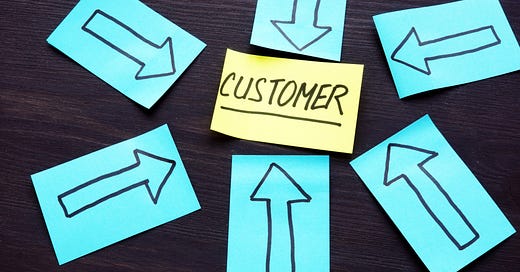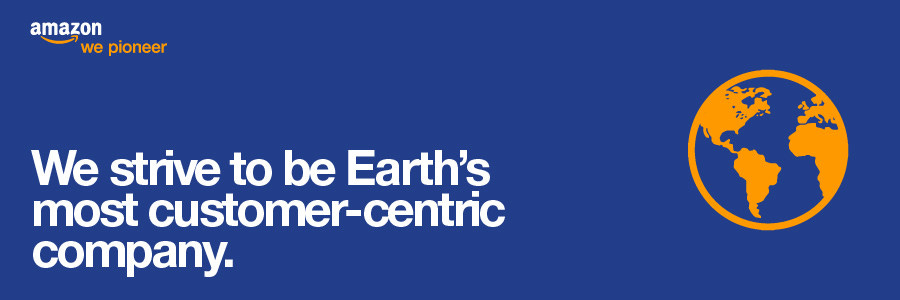Strategies and Techniques for Change Agents, Strategists, and Innovators
The purpose of business is to create and keep a customer — Peter Drucker
In today's highly competitive business landscape, many organizations find themselves struggling with internal bureaucracy and politics, hindering their ability to adapt and innovate. As companies grow and expand, it's all too easy to become self-centered, losing sight of the true purpose of a business: to serve its customers. When teams are internally focused, they often waste resources and time managing internal disputes, leading to suboptimal performance and reduced customer satisfaction. The key to overcoming these challenges lies in a simple yet powerful principle: customer centricity.
Customer centricity, or the art of putting customers at the heart of every decision and action, has the potential to revolutionize the way businesses operate. By shifting the focus from internal politics to the needs and expectations of customers, organizations can create a more efficient, results-driven environment. This change in perspective allows for better alignment of goals and objectives, encouraging collaboration and innovation while minimizing internal conflicts. As a result, companies can concentrate their efforts on delivering exceptional value and experiences to their customers, driving long-term growth and success.
In this week’s newsletter, we delve deeper into the world of customer obsession and explore how this transformative mindset can help your organization break free from the shackles of bureaucracy and internal politics. We'll share practical tips and strategies for fostering a customer-centric culture, enabling you to focus on what truly matters: creating outstanding outcomes for your customers. Stay tuned for an insightful journey into the world of customer centricity, and discover how to unlock the full potential of your organization.
Work to Define “Customer Centricity”
Are you really customer-centric? Of course, no one wants to admit they’re not customer-centric, but first, we must all agree on a definition. So, what is customer-centricity? Why is it important? What do we do differently if we are customer-centric? How do we measure it? Which mechanisms build customer centricity?
At its broadest, the definition of customer-centricity is “to put the customer at the center of everything an enterprise does.”
Customer-centricity is not the customer experience. Customer experience is tied to, but different from customer-centricity. Customer experience is how a customer uses and interacts with a company and its products or services. It includes their journey through the entire life cycle – from discovery through service. Customer centricity, in comparison, is the degree to which “the customer” and what is truly best for them is included in the work, strategies, options, investments, and decisions we make as an organization or team.
Customer-centricity is also not customer satisfaction. Customer satisfaction is how customers would evaluate the customer experience against expectations. While it may be one of the critical measures of customer centricity, customer satisfaction isn’t customer-centricity.
Customer-centricity is actualized by the decisions and priorities we make as an organization. Do we design and go to market as the customer sees us or as we are organized? Do we make decisions and execute them in a way that benefits the customer or in a way that generally benefits our business? Do we fall back to a common industry approach or find an “easier,” less customer-centric approach?
Enter Amazon
Many companies are debating how to become more “customer-centric,” but each has its own definition of the term and a different vision for what it might mean to their organization. Amazon was founded with the vision of “being the earth’s most customer-centric company.” Its definition of being customer-centric was developed as part of its leadership principles, in particular the first leadership principle, “Customer Obsession.”
This is Amazon’s definition of “customer centricity” -- “Amazonian leaders start with the customer and work backwards. They work vigorously to earn and keep customer trust. And, although Amazon’s leaders pay attention to their competitors, they obsess over customers.”
Amazon uses this leadership principle (one of sixteen) to give Amazon employees and Amazon’s strategy permission to do really hard things for the customer. Amazon will relentlessly try to get to perfection and reduce friction for its customers. This has been the hallmark of their strategy – solve really hard problems which improve customer trust and customer experience.
What does that look like? The first I would call a tactical example of customer centricity at Amazon. A customer service agent at Amazon can remove an item from selling at Amazon if too many customer issues or complaints arise. Until the root cause is fixed, the item doesn’t go back on sale.
The second example is a strategic example of customer centricity. These are investments in innovation and infrastructure to enable a new aspect of customer experience. A strategic example of customer centricity is developing a partnership with Kohls allowing an Amazon customer to return an Amazon order to a Kohls store – and it doesn’t need to be in a box. Just have the email with the QR code on your phone. This also works at an Amazon bookstore or a Whole Foods store. This is strategic because it wasn’t about fixing an existing customer’s experience; it was about investing and building a new capability enabling a new type of experience. And both of these experiences are focused on customer returns. A business case might lead you to keep friction in customer returns.
Being customer-centric leads you, in both cases, to perhaps sub-optimize the financial results in the short term with the belief that, in the long term, customer loyalty and centricity will lead to better business results.
Many research points support this assertion. Bain has published research that companies with excellent customer experience grow revenues 4% to 8% higher than their piers.1 Deloitte notes that “Sixty-two percent of B2B customers have purchased more from a company after a good customer service experience.”2
Customer Centricity – Getting Started
How do we start becoming a more customer-centric business?
Explore what “customer centricity” means for your team, organization, or business.
What are examples or stories where customer centricity is not demonstrated today? Write these out — what was the situation? How did decisions get made? What role did “customer centricity” play? How did decisions and priorities get set? Why weren’t we customer-centric at this moment? Only by evaluating how we act today will you find the unlocks to change.
Develop short stories of the future – clear examples taking place in the future where being customer-centric leads to different decisions or actions. What is the scenario? How did it result in a better customer experience? How were discussions, decisions, and priorities different because you were customer-centric?
Draft rules, guidelines, or goals on customer centricity. Don’t make them official – just try writing them out and try them on for a while. Etch them in jello. Find opportunities to use the guidelines in actual decisions or moments of truth. In a couple of months, having tried to use them, evaluate what your plan should be.
An example guideline might be, “We are committed to understanding the root cause of 90% of all customer contacts. We will pursue correcting these factors regardless of organizational boundaries (including external to our company).” Then put some steps, measures, and audits to reinforce this guideline. These steps are mechanisms to go from a “good idea” to “practice” and part of your culture.
You’re Now Ready to Start
By exploring current examples, potential future scenarios, and what the “rules” of customer centricity might be, we get to a far better & shared understanding of what being “more customer-centric” might mean for the business and how we might get there.
Focusing on others, our customers, as the anchor point for how we work, prioritize efforts, debate problems, innovate, and debate complex business situations not only builds a better business but creates higher employee satisfaction — because we are working in the service of others.
Onward!
John
About The Digital Leader Newsletter
This is a newsletter for change agents, strategists, and innovators. The Digital Leader Newsletter is a weekly coaching session focusing on customer-centricity, innovation, and strategy. We deliver practical theory, examples, tools, and techniques to help you build better strategies, better plans, and better solutions — but most of all, to think and communicate better.
John Rossman is a keynote speaker and advisor on leadership and innovation.
Learn more at
https://johnrossman.com
https://www.bain.com/insights/the-five-disciplines-of-customer-experience-leaders/
https://www2.deloitte.com/us/en/insights/focus/industry-4-0/customer-centric-digital-transformation.html





